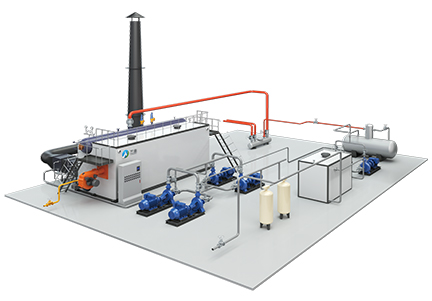steam boiler for aac industry factories
Steam Boilers for AAC Industry Factories
In the rapidly evolving world of construction materials, Autoclaved Aerated Concrete (AAC) has carved a niche for itself due to its lightweight, energy efficiency, and fire-resistant properties. One critical component in the production of AAC is the steam boiler, which plays a pivotal role in the curing process of the material. This article delves into the significance, types, and operational aspects of steam boilers in the AAC industry.
Importance of Steam Boilers in AAC Production
AAC is produced using a mixture of sand, lime, cement, water, and a small amount of aluminum powder. The reaction between these components produces hydrogen gas, which creates air pockets in the mixture, resulting in a lightweight product. However, to achieve the necessary strength and durability, the green AAC blocks must undergo a curing process in a high-pressure steam environment. Here, steam boilers come into play.
The steam boilers generate the required steam by heating water, which is then injected into autoclaves—large pressure vessels used to cure the AAC blocks. The steam’s high temperature and pressure facilitate a chemical reaction that enhances the blocks' structural integrity, ensuring they meet the necessary building standards. This process not only optimizes the production time but also increases the efficiency and quality of AAC.
Types of Steam Boilers
There are several types of steam boilers utilized in the AAC industry, each with its own set of advantages and considerations
1. Fire-tube Boilers These are one of the most commonly used boilers in various industries, including AAC. In a fire-tube boiler, hot gases from the combustion chamber pass through tubes that are surrounded by water. This design is efficient and relatively compact, making it suitable for smaller AAC production facilities.
2. Water-tube Boilers In contrast to fire-tube boilers, water-tube boilers circulate water inside the tubes while hot gases surround them. This design allows for high-pressure steam generation and is known for its ability to handle large loads. For large AAC factories, water-tube boilers can provide the necessary steam capacity and efficiency required for high-volume production.
steam boiler for aac industry factories

3. Electric Boilers While less common in large-scale AAC production due to their lower steam output, electric boilers can be used in smaller operations. They are environmentally friendly and require less maintenance, making them an appealing option for factories looking to reduce their carbon footprint.
Operational Considerations
When implementing steam boilers in an AAC factory, several operational aspects must be considered
- Efficiency Selecting a boiler with high efficiency is crucial, as it directly impacts production costs. Modern boilers are designed to optimize fuel consumption and minimize emissions.
- Maintenance Regular maintenance of steam boilers is essential to ensure safe and efficient operation. This includes checking for leaks, inspecting the combustion system, and cleaning scale buildup in the boiler.
- Safety Protocols Given the high-pressure nature of steam boilers, it is imperative to adhere to safety standards and regulations. Proper training for staff on operating procedures and emergency protocols can prevent accidents and ensure a safe working environment.
Conclusion
Steam boilers are indispensable in the manufacturing process of Autoclaved Aerated Concrete. By providing the necessary steam for curing, they enhance the efficiency and quality of AAC production. As the construction industry continues to seek sustainable and efficient building materials, the role of steam boilers in AAC factories will remain significant, promoting innovation and productivity in the sector. With the right type of boiler and a focus on operational excellence, AAC manufacturers can ensure long-term success and sustainability in their operations.
-
Custom Steam Boilers Manufacturer | AI-Enhanced EfficiencyNewsJul.31,2025
-
Top Electric Steam Boiler Makers | AI-OptimizedNewsJul.31,2025
-
Top Electric Steam Boiler Manufacturers - High Efficiency SolutionsNewsJul.30,2025
-
Top Electric Steam Boiler Manufacturers – Efficient Industrial SolutionsNewsJul.29,2025
-
Top Electric Steam Boiler Manufacturers | Reliable Industrial SolutionsNewsJul.29,2025
-
OEM Steam Boiler Solutions for Custom Needs | High Efficiency & VersatilityNewsJul.29,2025

